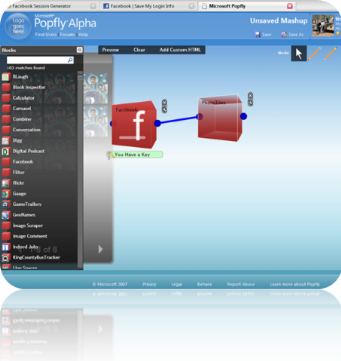Facebook is expanding its efforts to fight child pornography using Microsoft technology and has joined the National Center for Missing and Exploited Children’s PhotoDNA program, which was developed by Microsoft Research and Dartmouth College in 2009, uses image-matching technology to find known depictions of child pornography across the Web………..
The popular social networking website Facebook has begun using Microsoft technology to combat child pornography which is being shared through its service. Microsoft previously donated an image-matching technology called PhotoDNA to the National Center for Missing and Exploited Children (NCMEC) so it can work with online services like Facebook to stop the distribution of images that show children being raped. “I’m proud to say that Facebook – a company that has revolutionized life online and, among other accomplishments, is one of the leading photo-sharing services in the world – will implement PhotoDNA on its network to further its commitment to keeping children from being victimized,” said Ernie Allen, president and CEO of NCMEC. Microsoft has already implemented PhotoDNA in search engine Bing, file hosting service SkyDrive, and e-mail service Hotmail. “PhotoDNA identified horrific images on our services that we would have never found otherwise. To date, we have evaluated more than two billion images on our services using the PhotoDNA signatures provided by NCMEC, leading to the identification of more than 1,000 matches on SkyDrive and 1,500 matches through Bing’s image search indexing,” said Bill Harmon, the Associate General Counsel for Microsoft’s Digital Crimes Unit.
Harmon said PhotoDNA has a rate of zero false positives as it depends on signatures provided by NCMEC, which uses known child pornography. “Facebook’s participation in the PhotoDNA program will significantly expand the program’s impact,” he said, adding that PhotoDNA will be able to quickly and accurately identify known child pornography images among Facebook’s billions of files. “In just one month, Facebook’s services host more than 30 billion pieces of shared content, including photos, Web links, news stories, blog posts and more,” Harmon said. “Identifying graphic child pornography in a sea of content like that is a daunting task, but PhotoDNA is helping to find the proverbial needle in a haystack.” “Facebook will run PhotoDNA against all photos uploaded to the site, to block the distribution of these images of criminal exploitation,” said Chris Sonderby, Assistant General Counsel at Facebook. “The technology will also better enable us to better report these images to the National Center and police, to allow them to take immediate action.”
Sonderby said everyone working for Facebook shares a ‘deep commitment’ to ensure the safety of people who use its website. “We believe we have a great responsibility and privilege to provide a safe platform for the world to share and connect,” he said. Harry Farid, Professor of Computer Science at Dartmouth College and co-developer of PhotoDNA, expects the technology to have a huge impact as it spreads globally. “What we here at Dartmouth and Microsoft have been doing is developing technology that can pluck out those inappropriate images out of a sea of billions and billions of images and do this in a very fast, very reliable way,” he said. “And so what PhotoDNA does is, it extracts a signature of sorts from an image and then it looks for that signature. So it is very much like human DNA.” What makes PhotoDNA unique to previous technology is that it is still able to recognize photos through its signature even when it has been resized and edited, partly because it recognizes small parts of pictures rather than the complete photo. “Traditionally if people resized a photo or edited it in any way at all, the digital blueprint or signature of that photo would be different,” said Brad Smith, General Counsel and Senior Vice President for Microsoft’s Legal and Corporate Affairs. “It would be difficult or sometimes even impossible to find the nearly identical images in various places on different online services.” And although it might help Facebook get rid of most child pornography on its servers, it remains doubtful whether it will have an effect on the global distribution of the illegal content as offenders can instead use other photo sharing websites.
[ttjad keyword=”general”]




